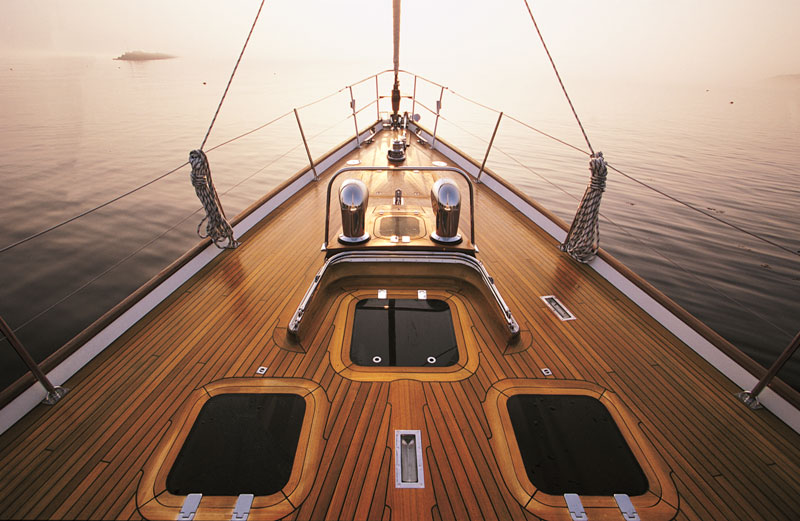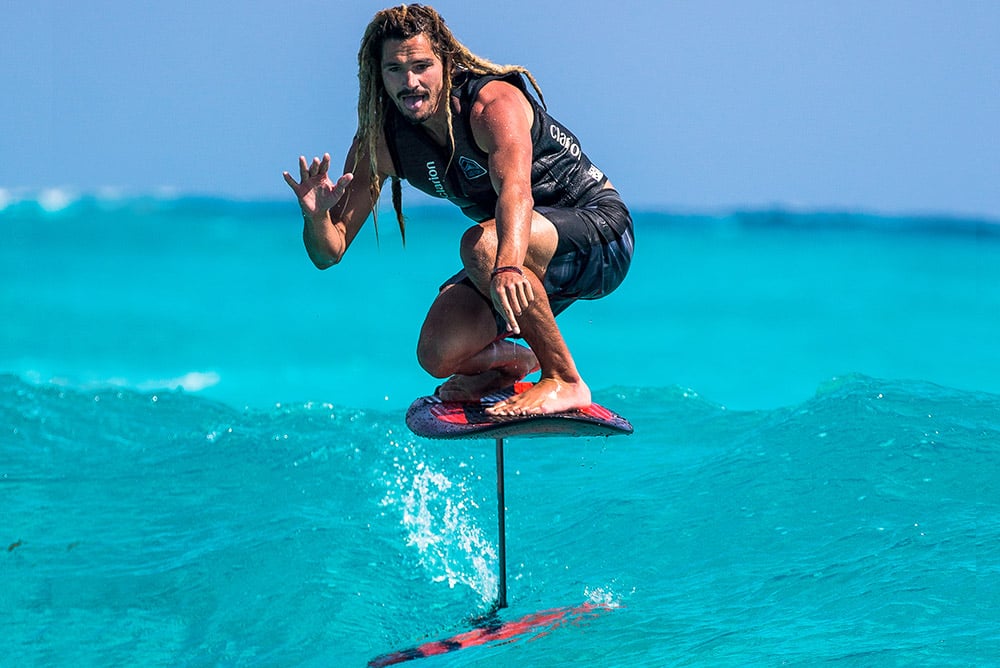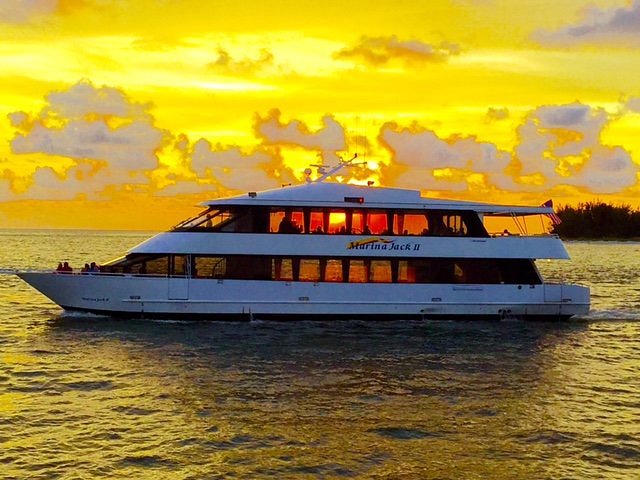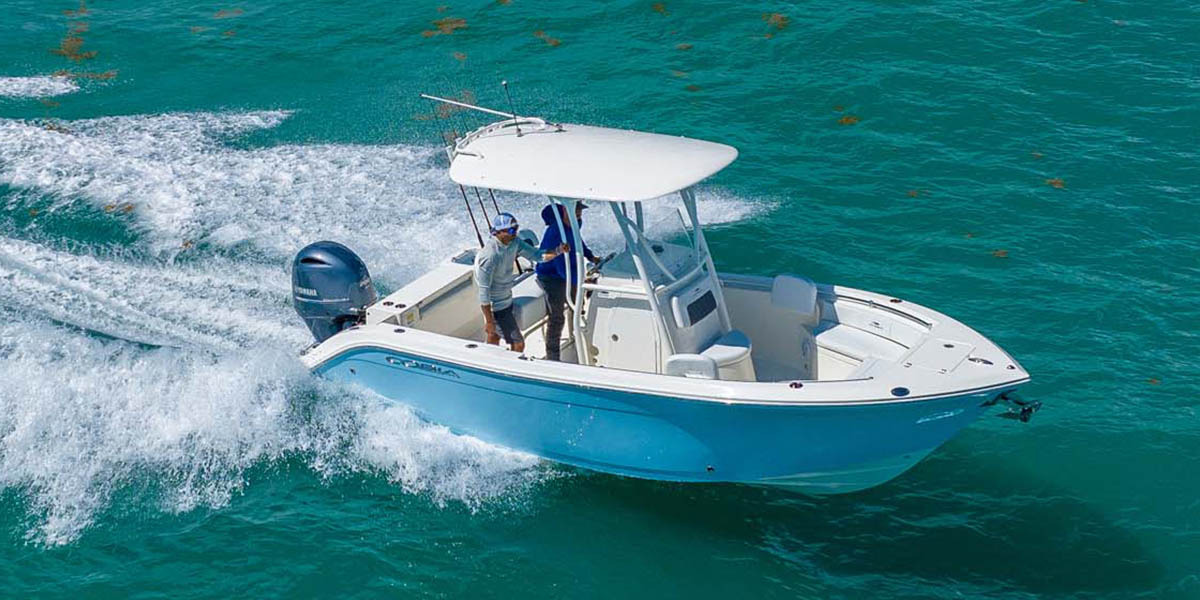Snorkeling Dry Tortugas National Park: A Sunken Paradise for the Adventurous Soul
Imagine a place where crystal-clear waters meet untouched coral reefs, where history and nature collide in a spectacular display of marine life and 19th-century architecture.

Welcome to Dry Tortugas National Park, a hidden gem nestled 70 miles west of Key West in the Gulf of Mexico.
Snorkeling at Dry Tortugas National Park offers some of the best underwater experiences in North America.
With vibrant coral reefs and diverse marine life just beneath the surface, you'll be transported to a world teeming with colorful fish, sea turtles, and maybe even the occasional nurse shark.
This remote paradise, accessible only by boat or seaplane, is a snorkeler's dream come true.
The park's pristine waters provide excellent visibility, allowing even beginners to enjoy the underwater wonders.
From the moat wall of Fort Jefferson to the nearby coral gardens, every fin stroke brings a new discovery in this aquatic wonderland.

Key Takeaways
- Dry Tortugas offers world-class snorkeling in crystal-clear waters teeming with marine life
- The park is only accessible by boat or seaplane, preserving its pristine natural beauty
- Snorkelers can explore diverse underwater habitats, from coral reefs to historic shipwrecks
History and Significance
Dry Tortugas National Park is a place where history and nature collide in spectacular fashion. It's a spot that'll make you feel like you've stumbled onto some long-lost secret of the Caribbean.
Fort Jefferson and Its Legacy
Fort Jefferson stands as a colossal brick fortress, a testament to 19th-century military engineering.
Built to protect American shipping lanes, this massive structure never fired a shot in battle. But damn, it's impressive.
The fort's construction began in 1846, dragging on for nearly 30 years. Workers battled harsh conditions, yellow fever, and hurricanes to build this behemoth. It's the largest masonry structure in the Americas - over 16 million bricks strong.
During the Civil War, Fort Jefferson served as a prison. Its most famous inmate? Dr. Samuel Mudd, the guy who set John Wilkes Booth's broken leg after he assassinated Lincoln. Talk about being in the wrong place at the wrong time.

Civil War to Present: Transformations
After the Civil War, Fort Jefferson's military importance faded. The Army abandoned it in 1874. But this wasn't the end for the old fort.
In 1908, the area became a wildlife refuge. Then in 1935, FDR declared it a National Monument. Finally, in 1992, it got the big promotion to National Park status.
Today, Dry Tortugas is a haven for history buffs and nature lovers alike. The park preserves not just Fort Jefferson, but also the surrounding marine ecosystem. It's a unique blend of man-made and natural wonders.

Cultural Artifacts and the Park's Protection
The waters around Dry Tortugas are a treasure trove of shipwrecks. We're talking centuries of maritime history just waiting to be explored.
One of the coolest wrecks? The HMS Tyger, a British warship that went down in 1742.
The crew actually lived on Garden Key for 56 days after the wreck. They even got into a scrap with a Spanish sloop. Now that's what I call a vacation gone wrong.
The park works hard to protect these underwater time capsules. They're not just cool to look at - they're important pieces of our shared history. Archaeologists study them to learn about life in centuries past.
Getting There: Travel Essentials
Reaching Dry Tortugas National Park requires some planning. You've got options, each with its own flavor of adventure.
Let's dive into the nitty-gritty of getting your ass to this remote slice of paradise.
Seaplane Versus Ferry: Pros and Cons
Want to feel like a badass? Take a seaplane. It's fast, scenic as hell, and you'll be sipping rum on the beach while the ferry folks are still puking their guts out mid-journey. But it'll cost you, both in cash and luggage space.
The Yankee Freedom ferry is the workhorse of Dry Tortugas transport. It's cheaper, sure, but you're in for a long-ass ride. 2.5 hours each way, to be exact. On the plus side, you can bring more gear and they feed you.
Seaplane pros:
- Quick (40 minutes)
- Stunning views
- Flexible schedule
Ferry pros:
- Cheaper
- More space for gear
- Includes meals
Choose your poison. Either way, you're in for one hell of a ride.
Departure Points: Key West Access
Key West is your gateway to this watery wonderland. It's a party town with a drinking problem, but it's also where your adventure begins.
For the seaplane, you'll head to the Key West International Airport. It's small, it's laid-back, and it's where you'll board your flying chariot.
The Yankee Freedom ferry leaves from the Historic Seaport. It's a bustling spot, full of sunburned tourists and salty old sea dogs. Get there early, maybe grab a Cuban coffee to shake off last night's hangover.
Both options require an early start. The ferry checks you in at 7 AM, while seaplanes have various departure times. Plan accordingly, and for God's sake, don't miss your ride.
Private Boat Navigation
Got your own boat? Fancy yourself a modern-day pirate? You can sail your own ass to Dry Tortugas. It's about 70 nautical miles west of Key West, so pack plenty of beer and sunscreen.
Navigation can be tricky. The waters are shallow, dotted with reefs that'll tear your hull to shreds if you're not careful. Charts and GPS are your best friends out here.
Bring your boat if you want true freedom. Anchor wherever you damn well please (within park rules, of course). Just remember, you're on your own out there. No rum runners to save your sorry ass if things go south.
Be prepared for rough seas and changing weather. The Gulf can be a fickle bitch, so check those forecasts religiously. And for the love of all that's holy, don't forget to file a float plan.
Snorkeling in the Park
Dry Tortugas National Park is a snorkeler's paradise. The crystal-clear waters teem with vibrant marine life, offering an underwater spectacle that'll blow your mind.
Understanding the Local Marine Ecosystem
The park's unique location at the southwest corner of the Florida Keys reef system sets the stage for an incredible underwater adventure. This isn't your average snorkel spot - it's the real deal.
The ecosystem here is a delicate balance of coral reefs, seagrass beds, and open water. Each plays a crucial role in supporting the diverse marine life.
Coral reefs are the rock stars of the underwater world. They're living, breathing organisms that provide shelter and food for countless species.
Seagrass beds? They're the unsung heroes. These underwater meadows are nurseries for young fish and feeding grounds for sea turtles.
The open water is where the big boys play. It's home to larger fish species and migratory animals passing through.
Designated Snorkel Areas: A Guide
Dry Tortugas doesn't mess around when it comes to snorkeling spots. They've got some of the best in North America, right here in these shallow waters.
The moat wall surrounding Fort Jefferson is a snorkeler's wet dream. It's teeming with colorful fish and coral formations. The water's shallow, making it perfect for beginners.
South Swim Beach is another hotspot. The coral heads here are like underwater skyscrapers, bustling with marine life.
For the more adventurous, the Windjammer Wreck site offers a glimpse into maritime history. The remains of this 19th-century ship are now home to a thriving ecosystem.
Remember, respect the reef. Don't touch, don't take, just observe and appreciate. This isn't a petting zoo, folks.
Flora and Fauna under the Sea
The underwater world of Dry Tortugas is a feast for the eyes. It's like Mother Nature decided to throw a party and invited all her most colorful creatures.
Coral reefs are the main attraction. Brain coral, elkhorn coral, and fire coral create an underwater landscape that's out of this world.
Fish? They've got 'em in spades. Parrotfish, angelfish, and groupers cruise by in a riot of colors. It's like swimming in a living rainbow.
Keep your eyes peeled for the bigger residents. Sea turtles glide gracefully through the water, while nurse sharks lurk in the shadows.
Don't forget to look down. The seagrass beds are home to seahorses and lobsters. It's a whole different world down there.
And if you're lucky, you might spot a manatee or dolphin. These gentle giants are known to make appearances in the park's waters.
Diverse Marine Habitats
Dry Tortugas National Park is a underwater wonderland. It's a place where nature puts on a show that'll make your jaw drop. The park's got it all - from bustling coral cities to sunken ships with stories to tell.
Reefs: Cities Under the Water
Coral reefs in Dry Tortugas are like underwater New Yorks. They're teeming with life, color, and action.
You'll see fish darting around like taxis, and sea turtles cruising like buses. Meanwhile, coral polyps reach out like tiny skyscrapers.
The water's so clear, you'd think you're flying. It's a seafood market gone wild - groupers, snappers, and parrotfish all vying for your attention.
But it's not just a pretty face. These reefs are the workhorses of the ocean. They're protecting the shoreline, feeding the locals, and keeping the whole ecosystem in check. It's nature's own version of checks and balances.
Shipwrecks and Wrecks: History Beneath Waves
Forget museums. The real history's under the waves. Dry Tortugas is a graveyard for ships, each with its own tale to tell.
You'll find wooden skeletons of old Spanish galleons, their gold long gone but their stories intact. There are more modern wrecks too, steel hulls slowly being claimed by the sea.
These aren't just piles of wood and metal. They're homes now. Fish dart in and out of portholes, and coral and sponges paint the hulls in psychedelic colors. It's like nature decided to redecorate, and damn, she's got style.
Each wreck is a time capsule, a snapshot of maritime history frozen in time. It's the kind of place that makes you wonder what other secrets the ocean's keeping.
Seagrass Beds and Sandy Foundations
Don't overlook the seagrass beds. They might not have the flash of the reefs or the drama of the wrecks, but they're the unsung heroes of the park.
These underwater prairies are like nurseries for baby fish. They're also favorite hangouts for sea turtles and manatees. It's like an all-you-can-eat buffet for these guys.
The sandy areas aren't just dead zones either. They're home to rays, skates, and all sorts of weird and wonderful bottom-dwellers. It's like nature's own game of hide-and-seek.
These habitats are the glue that holds the whole ecosystem together. They're not flashy, but they're essential. Kind of like the roadies at a rock concert - you don't see them, but without them, the show doesn't go on.
Wildlife Encounters
Snorkeling in Dry Tortugas National Park is like diving into a living aquarium. The waters teem with vibrant marine life, from colorful fish to ancient sea turtles. It's a wild, untamed slice of nature that'll knock your flippers off.
Fish and Coral Diversity
The reefs here are a damn circus of color and life. Tropical fish dart between coral heads like they're playing a high-stakes game of hide-and-seek. You'll spot parrotfish chomping on coral, their beaks making a sound like someone's crunching gravel.
Groupers lurk in the shadows, eyeing you with that "what are you looking at?" stare. And then there's the tarpon - silver bullets of the sea, prowling the edges of the reef like they own the place.
The coral itself is a masterpiece. Brain coral, elkhorn, staghorn - it's like someone went crazy with an underwater 3D printer. Each formation is a miniature city, bustling with marine life.
Turtles, Lobsters, and Other Sea Creatures
Sea turtles glide by with the grace of underwater ballerinas. These ancient mariners have seen it all, and they're not impressed by your snorkeling skills. Watch them munch on sea grass, their movements slow and deliberate.
Lobsters peek out from under ledges, their antennae twitching like they're picking up alien signals. If you're lucky, you might spot an octopus doing its best rock impression before suddenly exploding into a cloud of ink and tentacles.
Rays cruise the sandy bottoms, their wings undulating hypnotically. It's like watching a living, breathing magic carpet ride.
Respectful Observance of Sharks and Predators
Now, let's talk sharks. These bad boys are the rock stars of the reef. Nurse sharks are the most common, lounging on the bottom like lazy dogs. They're about as dangerous as a throw pillow, but still command respect.
Remember, you're in their house. No touching, no chasing, no trying to get that perfect selfie. Observe from a distance and marvel at their streamlined beauty.
Barracuda might cruise by, all teeth and attitude. They're just window shopping, not looking for a fight. But their presence reminds you that this isn't some sanitized theme park - it's nature, raw and unfiltered.
Snorkeling Safety and Best Practices
Snorkeling in Dry Tortugas National Park is like diving into a liquid paradise. But even in paradise, you gotta watch your ass. Here's how to keep your head above water and your fins out of trouble.
Understanding Snorkeling Gear and Usage
First things first, get your gear right. A mask that fits like a glove and fins that don't pinch are your best friends out there. No bargain bin bullshit - quality matters when you're face-to-face with a barracuda.
Make sure that mask seals tight. Fog it up, rinse it out. Nothing ruins a good snorkel like a leaky mask.
Fins aren't just for show. They're your engine in the water. Practice kicking from the hip, not the knee. You'll glide through the water like a damn dolphin.
And for Christ's sake, don't forget the snorkel. It's not called snorkeling for nothing.
The Buddy System and Emergency Measures
Flying solo might seem badass, but it's fucking stupid in the water. Buddy up. It's not just about having someone to high-five when you spot a sea turtle.
Keep an eye on each other. If your buddy's flailing like a caught fish, something's wrong. Know the hand signals. They could save your life.
If shit hits the fan, don't panic. Take slow, deep breaths and signal for help. Remember, the surface is your friend.
Cramps happen. Float on your back, massage it out. The ocean ain't going anywhere.
Respecting the Marine Sanctuary Laws
This ain't your backyard pool. It's a goddamn national treasure. Treat it with respect.
No touching, no taking. Those coral reefs? They're alive, and they're fragile as hell. Brush against them, and you might as well be kicking a puppy.
Marine sanctuary laws aren't suggestions. They're the rules of the house. Break 'em, and you're not just an asshole - you're a criminal.
Use reef-safe sunscreen. Regular stuff is like poison to the coral. And for fuck's sake, don't litter. Take only pictures, leave only bubbles.
Park Amenities and Resources
Dry Tortugas ain't your typical national park. It's a remote, sun-baked outpost where creature comforts are scarce and the raw beauty of nature takes center stage. But for those willing to rough it a bit, the park offers just enough to keep you going.
On-Island Facilities
Let's be real - you're not coming here for the five-star amenities. Garden Key, the main island, has basic facilities that'll keep you alive, but not much more.
There's a small visitors center where you can get the lay of the land and pick up some info on the park's history.
Restrooms? Yeah, they exist. Don't expect anything fancy. Fresh water is limited, so bring your own bottle and fill up when you can.
If you're camping, there's a designated area with picnic tables and grills. It's primitive camping at its finest - or worst, depending on your perspective.
Food options are non-existent, so pack your own grub. And for God's sake, don't forget the sunscreen.
Educational Programs and Tours
Despite its remoteness, the park actually offers some decent educational programs. Rangers lead guided tours of Fort Jefferson, that massive brick behemoth dominating Garden Key. It's a fascinating glimpse into 19th-century military engineering and the harsh realities of island life.
For the history buffs, there are talks on the fort's past, including its time as a prison during the Civil War. Nature lovers can join bird-watching excursions or attend presentations on the park's marine life.
If you're into self-guided exploration, interpretive signs scattered around the fort and island provide insights into the area's natural and cultural history. Just don't expect any high-tech interactive displays - this place is old school.
Snorkeling Equipment Rentals and Shops
Here's the deal with snorkeling gear: bring your own if you can. The Yankee Freedom ferry from Key West offers basic snorkel equipment rentals, but it's limited and not exactly top-of-the-line stuff.
If you're serious about your underwater exploration, consider picking up gear in Key West before you make the trip. There are several dive shops in town that'll set you up with quality masks, fins, and snorkels.
Once you're at the park, you're on your own. There are no rental shops on the islands, so if you forgot something, you're out of luck. The upside? The snorkeling here is world-class, with crystal-clear waters and an abundance of marine life just offshore.
When to Visit: Climate and Conditions
The Dry Tortugas are a fickle mistress, teasing you with crystal-clear waters one moment and stormy seas the next.
Timing is everything in this remote paradise. Get it right, and you'll be swimming in a snorkeler's dream. Get it wrong, and you might as well be paddling in pea soup.
Seasonal Weather Patterns and Water Conditions
Summer in the Tortugas? It's hot as hell and wet as a dog's nose.
June through August, you're looking at temperatures in the 90s and daily downpours. The water's warm, sure, but visibility can be a crapshoot.
Winter's a different beast. December to February, it's cooler and drier. Water temp drops to the low 70s. You might need a wetsuit, but the visibility is often excellent.
Spring and fall? That's the sweet spot.
Mild temps, less rain, and water clear enough to spot a mermaid's tail from a mile away.
Timing Your Visit for Optimal Experience
Want the best of both worlds? April to June is your golden ticket.
Warm enough to swim comfortably, cool enough not to fry, and the water's like looking through glass.
Fall's not bad either. September to November, you'll dodge the crowds and save some cash.
The coral reefs are still healthy, the fish are plentiful, and the water's warm enough to make you forget about the world outside.
Just remember, this is nature we're talking about. She doesn't give a damn about your plans.
Check the offshore forecast before you go, and be ready to roll with the punches.
That's the beauty of the Dry Tortugas – it's wild, unpredictable, and utterly unforgettable.
Conservation and You
Protecting this underwater paradise ain't just for the professionals. Every snorkeler who dips their fins in these crystal-clear waters becomes a guardian of this fragile ecosystem.
The Role of Snorkelers in Preservation
Snorkelers, listen up. You're on the front lines of conservation here.
Don't be that asshole who touches the coral or harasses the marine life. It's not a petting zoo, folks.
Keep your hands to yourself and your fins off the reef. Use reef-safe sunscreen.
That cheap crap you bought at the drugstore? Leave it on the boat.
Pick up any trash you see floating around. Every piece of plastic you snag is one less threat to the sea turtles and fish that call this place home.
Ongoing Conservation Efforts and Support
The Florida Keys National Marine Sanctuary isn't just a fancy name.
These folks are busting their asses to keep this underwater wonderland intact. They're battling coral disease, monitoring water quality, and restoring damaged areas.
Want to be more than just another tourist?
Volunteer for a reef cleanup. Donate to local conservation groups.
Hell, adopt a coral through one of the restoration programs.
Every buck you throw their way helps keep this natural wonder alive for the next generation of wide-eyed snorkelers.
It's not just about pretty fish and cool coral formations. It's about preserving a whole damn ecosystem.
Frequently Asked Questions
Snorkeling in Dry Tortugas National Park is a wild adventure that'll blow your mind. The pristine waters and vibrant marine life are unlike anything you've seen before. Let's dive into the nitty-gritty details you need to know.
What type of marine life can you expect to see while snorkeling in Dry Tortugas National Park?
This place is a goddamn underwater paradise.
You'll be swimming with colorful coral reefs and an abundance of marine life. We're talking about tropical fish in every shade of the rainbow, sea turtles gliding by, and if you're lucky, maybe even a nurse shark or two.
The water visibility here is insane - up to 100 feet. It's like swimming in a giant, natural aquarium.
Do you need a guide to snorkel in the Dry Tortugas, or can you explore on your own?
Here's the beauty of it - you can do either.
If you're a seasoned snorkeler, go ahead and explore on your own. The park's got some great spots for swimming and snorkeling that you can easily access from the beach.
But if you're new to this or want the inside scoop, grab a guide. They'll show you the best spots and tell you about all the crazy shit you're seeing underwater.
What are the options for getting to Dry Tortugas National Park for a snorkeling trip?
Getting here is half the fun, my friends. You've got two options: boat or seaplane.
The ferry's the most common way - it's a 2.5-hour ride from Key West.
If you're feeling fancy, take a seaplane. It's quicker and you get a bird's eye view of the Keys. Either way, you're in for one hell of a ride.
Are there any safety concerns to be aware of when snorkeling in Dry Tortugas National Park?
Listen up, because this is important.
This isn't your backyard pool - it's the open ocean. The park's pretty remote, so you need to be prepared.
Watch out for strong currents and don't swim too far from shore. And for God's sake, wear sunscreen. The Florida sun is no joke.
Is snorkeling equipment provided on the Dry Tortugas National Park ferry or tours?
Yeah, most tours and the ferry will hook you up with basic snorkel gear. But if you've got your own, bring it. Nothing beats using equipment you're comfortable with.
Just remember, this isn't a resort. It's a national park with primitive conditions. Don't expect any fancy gear rentals once you're there.
What are the best times of year for snorkeling conditions in Dry Tortugas National Park?
The best time? That's like asking a chef their favorite ingredient. It depends.
Summer's got the calmest seas and warmest water, perfect for snorkeling.
But if you can handle a bit of chill, winter's got the clearest water. Less rain means better visibility. Plus, you'll dodge the summer crowds.
Spring and fall are a nice middle ground. Decent weather, fewer people. Just keep an eye on hurricane season from June to November.
Charlie is Editor-in-Chief of Sea Magazine







